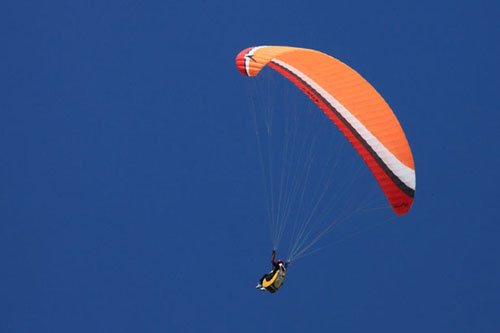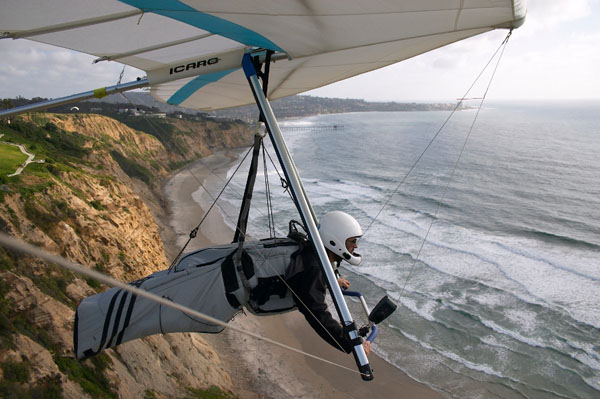 Microlights are simple weightshift-controlled wings equipped with an engine and landing gear. They typically carry a pilot and passenger in a suspended in a tricycle-like vehicle. This type of aircraft is inherently very stable and can operate conveniently and relatively inexpensively from short take-off and landing areas. They are also very portable and can be set up and packed very rapidly.
Microlights are simple weightshift-controlled wings equipped with an engine and landing gear. They typically carry a pilot and passenger in a suspended in a tricycle-like vehicle. This type of aircraft is inherently very stable and can operate conveniently and relatively inexpensively from short take-off and landing areas. They are also very portable and can be set up and packed very rapidly.
Microlights provide a good platform for taking interesting aerial pictures. Flexwing craft are good because they are open on all sides, but they also tend to be less stable than fixed wing planes. They are also not suitable for use in windy or cloudy conditions (this is illegal in some countries), and the pilot needs both hands to control the craft. Autogyros are also useful for aerial photography because they are not too badly affected by wind or turbulence, and slow almost to a hover with a suitable head wind. They also offer the pilot an unobstructed view, and most are able to carry a passenger.
 However the experience can be a cold one. Rushing through the air at 70mph is relatively comfortable in warm air, but when the temperature drops appropriate warm clothing is required. They also produce a fair amount of vibration, so use a fast shutter speed, perhaps 1/500sec or 1/1000sec, for the sharpest images. Open up the lens aperture and, if necessary, increase the ISO speed to make a fast shutter speed possible. Wide-angle lenses are useful for images that include parts of the microlight structure, and are also easier to use and hold reasonably steady. Longer lenses, perhaps 70mm or 85mm focal lengths, are a better choice if the aim is to exclude the structure of the aircraft from images, but are somewhat more difficult to hold steady. Long telephoto lenses are generally unsuitable.
However the experience can be a cold one. Rushing through the air at 70mph is relatively comfortable in warm air, but when the temperature drops appropriate warm clothing is required. They also produce a fair amount of vibration, so use a fast shutter speed, perhaps 1/500sec or 1/1000sec, for the sharpest images. Open up the lens aperture and, if necessary, increase the ISO speed to make a fast shutter speed possible. Wide-angle lenses are useful for images that include parts of the microlight structure, and are also easier to use and hold reasonably steady. Longer lenses, perhaps 70mm or 85mm focal lengths, are a better choice if the aim is to exclude the structure of the aircraft from images, but are somewhat more difficult to hold steady. Long telephoto lenses are generally unsuitable.
 Everything carried on a microlight flight should be firmly attached to its owner. It is all too easy for small items to be blown away, sometimes in to the propeller. Leave lens caps and similar accessories on the ground, although a filter can be attached to the front of the lens to protect against insects etc. Take care that any straps used to secure equipment are not allowed to tangle with flight controls.
Everything carried on a microlight flight should be firmly attached to its owner. It is all too easy for small items to be blown away, sometimes in to the propeller. Leave lens caps and similar accessories on the ground, although a filter can be attached to the front of the lens to protect against insects etc. Take care that any straps used to secure equipment are not allowed to tangle with flight controls.
Haze is a common problem in aerial photographs. From the ground, the air may appear absolutely clear, but from a few hundred feet above the ground a distinct haze often begins to reveal itself. This reduces contrast in the images and reduces their impact. It is worth researching the local weather conditions and talking to pilots who fly regularly to determine not only the best time of day to fly but also the anticipated conditions on a particular day.
Hang gliders are weight-shift controlled gliders from which a pilot is suspended in a harness.They launch in to the wind from a hill or steeply descending ground, or can be winched in to the air or towed aloft behind a microlight. The pilot controls the hang glider by moving his or her weight relative to the control bar. As with all types of aircraft, appropriate training is required.






